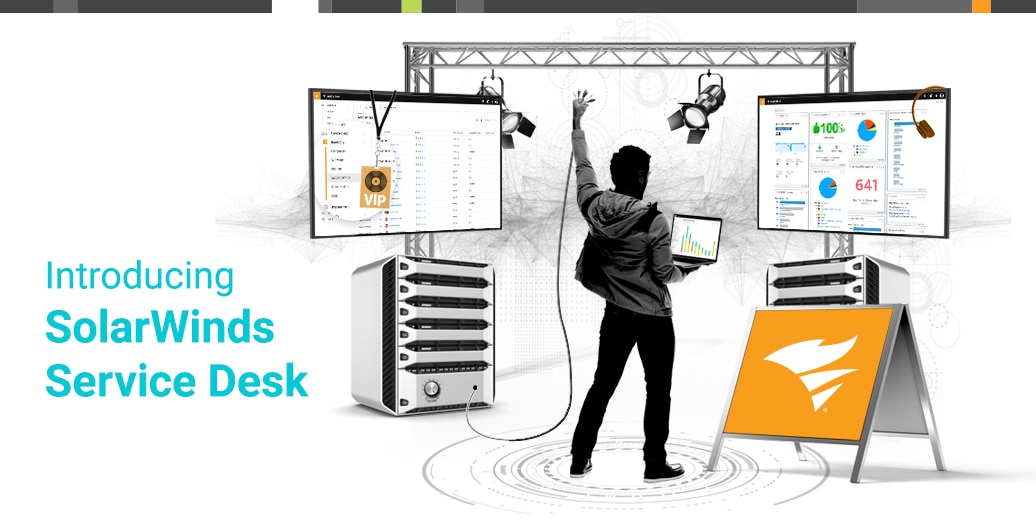You’ve been contemplating adopting a new
ITSM solution for some time. The current one handles the bare minimum—it helps your team churn through a ticket queue—but you know there are other solutions capable of more. So what’s standing in your way? Implementing that new platform seems time-consuming and stressful. But it doesn’t have to be.
First things first, let’s make a checklist. Whether it’s for moving, going to the grocery store, or planning a party, a checklist establishes order and helps you to keep track of what has and hasn’t been completed. Not to mention the satisfaction of physically checking something off of it. The checklist can be your best friend when trying to stay organized. Having one for ITSM implementation is no different. Though every organization may have slightly different goals, it’s worth considering the following items for your list.
Offer a foundation of articles in the knowledge base
The functionality of the
knowledge base isn’t going to work unless you’ve put thought into what people are going to search for and what the title of the knowledge article should be. The resources you provide should be in the language that the end user can understand.
Jason Thompson, desktop support manager of Town of Gilbert, Arizona and SolarWinds customer who implemented the SolarWinds
® Service Desk in 8 weeks and during the
coronavirus pandemic, talked about his implementation experience.
“Looking at the top 10 issues and documenting them in the knowledge base gave us a good foundation when we first implemented the solution,” Thompson said. “Then when we found out we were going remote, we had to create articles based on how to setup VPN, how to collaborate on Microsoft Teams, and even how to use the service desk.”
“Because it was brand new, we didn’t have time [before the pandemic] to offer training, so creating a how-to article about the service desk for our customers was necessary,” said Thompson. Once they established a foundation of articles, Thompson considered the ways they could continue to develop. “We had about 30 knowledge base articles when we went live [at the beginning of the pandemic]. Now, we have over 220.”
Provide additional resources for end users
Besides submitting a service request or using the knowledge base, what other resources can customers rely on to find answers to their questions?
Live chat is a great option for customers to use when they need a specific answer. For example, if an end user wants to know why they can’t access a particular application, live chat can present a list of potential fixes that could solve the problem. Those fixes save human IT staff time and energy for more complicated issues.
What about those employees who don’t work the traditional 9-5 and need assistance outside of those hours? Having
mobile app access to your ITSM solution can make it easier to designate which team members should respond to an urgent request. Giving employees the ability to create a ticket from their smartphone means more convenience if access to their laptop or internet isn’t available.
“Our customers love the fact that they don’t have to be on the network or authenticated to our internal network to open a ticket,” said Thompson. “As a town, we employ all kinds of staff and they’re not always in the office. So we’ve given them the opportunity to use their mobile device, which is something they’re familiar with. It’s intuitive and easy to use.” Before you go live with a solution, consider the possibility of staffing a live chat outlet for requesters and creating a set of resources they can access through their mobile devices.
Measure customer satisfaction and have a follow-up process
Customer satisfaction is probably the most crucial indicator of how well the ITSM solution is performing. After all, if the customer isn’t satisfied, is what you’re doing even worth it? After incidents have been resolved, have customers complete a quick survey asking if they were satisfied with the service they received. These surveys can have a thumbs up or thumbs down, yes or no, and can even include a section for them to elaborate on their experience.
“When we get data back on the surveys, not only does it help us identify what we’re doing right, it allows us to also identify opportunities that we can perform better,” Thompson said. “If we missed the mark somewhere, we take that feedback to discuss it, reach back out to the customer if it’s appropriate, and find a way to improve our process. Since we’ve implemented the new system, I think we’ve gone from a 15% response rate to a 36% average response rate to surveys.”
Include categories that end users can understand
When creating categories, ITIL’s guiding principle “Keep It Simple and Practical” should be applied. In a modern solution, when a user creates a ticket, a category and subcategory suggestion should appear based on the history of tickets and keywords within them. This level of maturity in a service portal makes it easy for customers to find solutions to their problems.
“In our previous system, people were unhappy with the categories we had set up, so we didn’t want to rebuild our existing system in our new solution,” Thompson said. “We used a lot of the values that came out of the box [of the SolarWinds solution]. Of course we had to add a few categories but the key was to capture what the customer would try to articulate.”
Effective categories can also help with problem management. When multiple tickets seem to have a common underlying problem, a quick category and subcategory search pulls up every applicable ticket, which helps the problem management team to identify trends: the times of day, systems affected, traffic patterns, and other factors relevant to the problem.
The thought of rolling out an ITSM solution doesn’t have to haunt you and your team. This implementation checklist can keep you organized throughout the process and set you up for long-term success.







